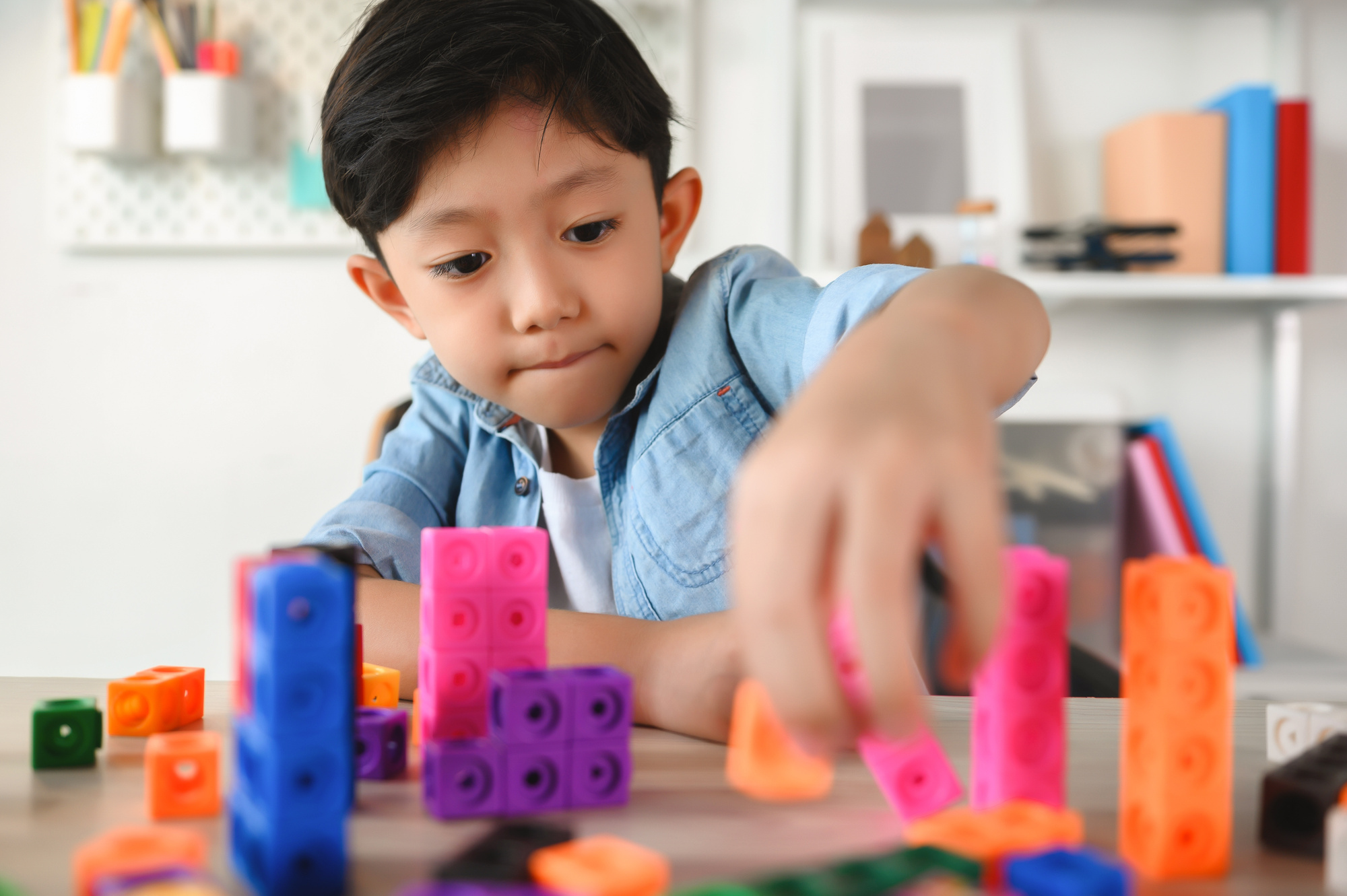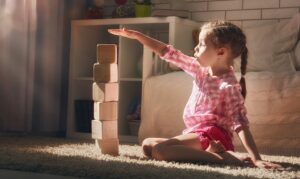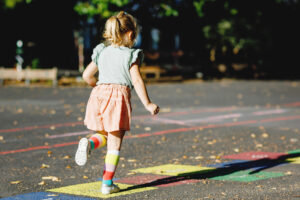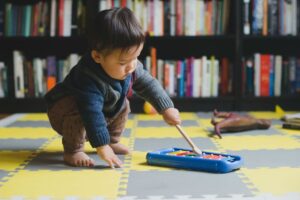
Has your little explorer ever built a magnificent tower only to bump it over with one enthusiastic step? Such moments highlight the evolving spatial awareness in toddlers. This skill underpins their coordination, enhances problem-solving, and nurtures confidence.
Every parent should be able to guide their toddler to develop proper spatial awareness using fun methods. In this article, you’ll explore its basic concepts, the potential signs and causes of its issues, and the entertaining and educational activities that enhance spatial awareness through play.
Understanding Spatial Awareness And Its Impact

Spatial awareness measures a person’s ability to comprehend and engage with their surrounding space. Toddlers start grasping these concepts early, developing as they play and explore. Strong spatial awareness aids in navigating space, understanding directions, and mastering academic tasks.
Young children typically develop spatial skills through various environments, including home, preschool, and daycare, as well as during outdoor play and exploration. But other places such as playgrounds, gardens, and corn farm mazes like Mazeplay offer a fun yet educational experience enhancing spatial understanding.
Recognizing and encouraging spatial awareness sets the foundation for a child’s success in various activities. Among the numerous advantages are enhanced coordination, improved problem-solving abilities, and a boost in confidence. Early engagement in spatially rich activities can make a significant difference in a child’s developmental journey.
Signs Of Spatial Awareness Difficulties In Toddlers

Children, even infants, start grasping basic concepts of spatial awareness early in life. They develop this skill further when they start walking and learning how to hold objects. However, in some children, challenges may arise, which is why you must be aware of these signs indicating difficulties in spatial awareness:
Bumping into Furniture
Toddlers are naturally a little clumsy, but frequent collisions might indicate a spatial awareness issue. If your child often misjudges distances or spaces, bumping into furniture or walls, it’s worth paying attention to. This consistent lack of awareness of their surroundings can lead to more accidents and is often a sign they’re struggling to process spatial information.
Trouble Using Both Hands in Play and Daily Activities
Toddlers are still learning both gross and fine motor skills, mostly with their hands, at their age. Effective coordination of both hands is essential for many daily tasks and games. If your child struggles to coordinate their hands for tasks like using zippers or molding clay, they might have a spatial understanding issue. Such challenges may arise from struggling to comprehend the spatial relationship between their limbs and surrounding objects.
Coordination Issues or Clumsiness
It’s common to see toddlers moving unsteadily as they’re still getting used to their bodies and moving independently. However, it may be concerning if your child continually exhibits coordination problems.
Catching or kicking a ball requires a good understanding of timing and space. If your toddler often misses the ball or can’t coordinate their movements well, it might indicate spatial difficulties. This lack of coordination often appears in both gross motor activities like running and fine motor activities like building blocks or drawing.
Poor Legibility or Writing with Varying Pressure
Some toddlers may have difficulty gauging the spaces between words or letters as they practice writing. While it’s normal for their age, it could be a cause for concern if the issue persists as they age.
When your toddler begins to draw or write, observe their pressure and control. Excess force causes the paper to tear or pencil to break, while a lack of it leads to your toddler not writing anything at all. If they struggle to control their movements within the confines of the paper or hold writing tools awkwardly, it might also point toward spatial awareness difficulties.
Fear Of Play Equipment
Large playground equipment might intimidate toddlers struggling with spatial awareness. Fearing or hesitating to engage with play equipment like slides or swings might indicate a lack of spatial confidence.
Children who are unsure about distances, heights, or their ability to navigate spaces might shy away from these activities. This fear often indicates an underdeveloped sense of space and depth.
Difficulty Following Instructions with Positional Words
Toddlers typically learn positional words such as ‘up,’ ‘down,’ ‘left,’ and ‘right’ early. If your child frequently misunderstands or cannot follow these directions, it might suggest spatial awareness difficulties. This challenge can affect their ability to perform tasks, play certain games, or navigate their environment effectively.
Causes Of Spatial Awareness Difficulties

Various factors contribute to spatial awareness difficulties in children. Potential reasons include developmental delays, insufficient interaction with enriching settings, or genetic factors.
Identifying these causes is the first step in helping your child. Consulting their pediatrician could lead you to therapeutic options for improvement. Subsequently, engaging in targeted activities can significantly enhance their spatial skills.
Part 1: Building Little Architects: Playful Activities for Early Development (ages 1-3)
Sensory Exploration
Sensory exploration is crucial at this stage. Encouraging your toddler to touch, see, and hear different materials can significantly enhance their understanding of the world. Activities like squishing play dough, feeling the bark of trees, or listening to various sounds in nature stimulate sensory development and spatial awareness.
Introduce textured scarves or containers with different grains to heighten their tactile and spatial learning. Montessori toys and other age-appropriate educational resources can support toddlers’ spatial awareness, cognitive development, and independence.
Construction Zone
Building is a fun activity common in many households with toddlers. It teaches them cause and effect, balance, and how things relate spatially. Offer your toddler a variety of blocks and let them freely explore and build. Observe as they learn to stack, balance, and create.
Playing with blocks helps develop fine motor skills and begins to introduce concepts of three-dimensional space. Moreover, it motivates them to describe their building process, enriching their space-related vocabulary.
Shape Safari
Recognizing and understanding shapes is a toddler’s first step to decoding the world around them. Introduce shape-sorting games and puzzles to them. As they experiment with fitting shapes like a circular block into a round hole, toddlers gradually begin to understand concepts like roundness and curvature. Use everyday objects to point out shapes and their features. This activity enhances their visual-spatial skills and prepares them for more complex spatial tasks.
Body in Motion
Children learn about space by moving in it. Involve your toddler in activities that require jumping, stretching, and turning. These could be simple games like ‘Simon Says’ or an obstacle course using cushions and toys. As they navigate their way, they understand distance, direction, and their body’s relationship to objects around them. Dancing to different tunes is also a great way to help them grasp rhythm and movement in space.
Part 2: Level Up! Engaging Activities for Growing Explorers (ages 3-5)
Puzzle Mania
Puzzles are a great way to enhance spatial reasoning in toddlers. They require a child to recognize patterns and understand how different pieces fit together. Start with simple shapes and gradually move to more complex jigsaw puzzles.
While your child arranges puzzle pieces, they cultivate a deeper grasp of how parts form a whole and bolster their problem-solving ability. You can also help develop their spatial language by encouraging them to explain their thought process in putting each piece in its place.
Treasure Hunt Adventures
Adaptable to any space, treasure hunts provide a dynamic way to boost critical thinking and spatial relationship understanding. Set up clues around your house that lead to a hidden object in a nearby spot or another room. Use spatial words in your clues, such as “under the blue chair” or “next to the tall tree.”
This activity fosters critical thinking and a deeper understanding of spatial relationships in children. It also adds an element of fun and adventure to learning. Make the hunt more challenging for older children by including maps or compass directions.
Creative Canvas
Art, through activities like drawing and modeling, allows children to explore and express their spatial understanding creatively. With a simple canvas or paper and coloring materials, allow your child to draw or paint scenes from their environment.
Guide them to focus on perspectives, such as drawing a room from a corner view or painting a park scene. Discuss the size and placement of objects in their artwork to enhance their understanding of space and distance. This creative expression aids in their ability to visualize and interpret space effectively.
Storytelling in Space
Through descriptive scenes and settings, bedtime stories can help children visualize and understand spatial relationships. Engage your child in storytelling, where they can act out scenarios using their toys or props. This helps them understand the scene setting and the spatial relationship between characters.
Reading books with descriptive spatial language also enriches their understanding and vocabulary. If your child wants to create their own stories, encourage them. Describing the setting and positioning of characters helps boost their spatial awareness.
Conclusion
Encouraging spatial awareness through play is fun and essential for a toddler’s growth. Incorporating these activities into daily routines promotes continuous learning and development. Use the options in this article as your guide and tailor these activities to your child’s interests and developmental stage for optimal engagement.
Empower your little navigators to explore and conquer their world with confidence. Each step they take advances their mastery of spatial awareness, guiding them toward a future of coordination and confidence.


Leave a Reply